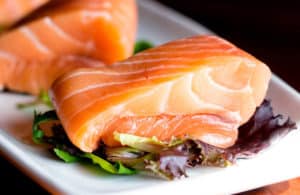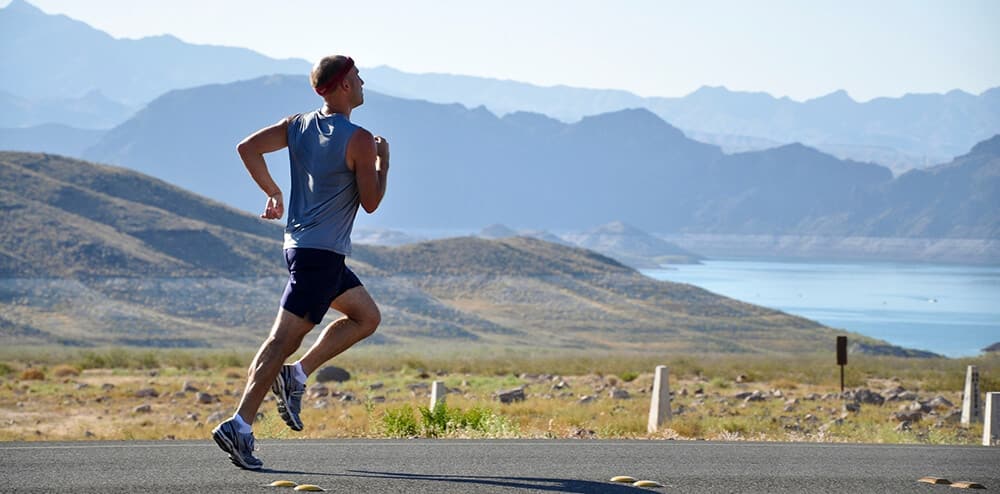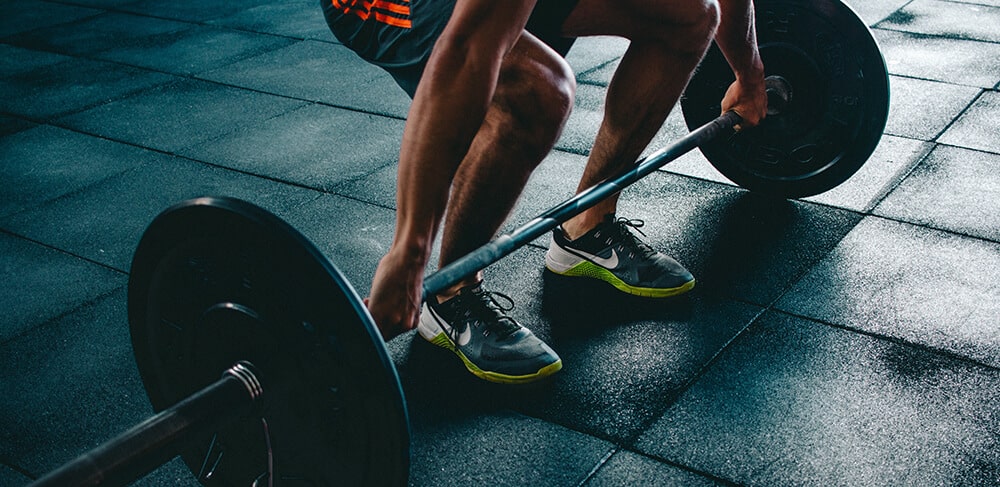Should Yiu Exercise When Starting A Low Carb Diet
Regular exercise is a great way to improve your health and wellbeing, and a keto diet is a great way to lose weight and can bring other health benefits. The question is what happens when you combine Keto and exercise? Does a Keto diet affect exercise performance? And will exercise make avoiding carbs impossible?
Exercising and eating a keto diet can be perfectly compatible, but it's important to realise that as you are fuelling your body in a completely different way, it's going to respond differently too.
In eating a keto diet we're changing how we get energy. But when we exercise, getting access to energy is critical to maintaining performance and going Keto will affect this. Understanding this is key to knowing how to eat a Keto diet and exercise effectively at the same time.
In this Keto Exercise guide we will go into depth to look at what impact a ketogenic diet has on your body, and how that may change the way you exercise and especially how you fuel up in preparation for, or after working out.
How your body works when you exercise
Your body is an extremenly complex and adaptable machine, able to handle a huge variety of situations and stresses. From sitting on the sofa watching tv, to (with a little training) climbing mount Everest. Our bodies need to be really flexible in how they get energy efficiently to perform in all scenarios.
We've managed that by not relying only on one source of energy to work. Instead our bodies make use of a number of 'metabolic pathways' to provide energy, generally utilising the best one for the job. Some of the key ways we access energy are below:
Ketosis
Ketosis is the process by which fats within the body are oxidised and broken down into a series of compounds including ketones, which are then utilised for energy. This is one part of the 'aerobic' metabolic pathway (aero means oxygen, which is required).
A person is generally considered to be in ketosis once ketones are the primary fuel source being used over other sources. This is a process which taps into the huge energy reserves of fat on the typical person, but is generally not able to produce large amounts of energy at any given time. For this reason ketosis alone is not an ideal fuel source for short periods of intense activity.
Glycolysis
This is the process which makes use of glucose as the primary fuel source for the body. For most people eating a western diet this is how you fuel your day. Glycolisis quickly makes use of glycogen stored directly in the muscles or in the liver to provide energy.
Moderately high intensity exercise is fuelled by this process, although for very short, very intense bouts of exercise under 10 seconds (eg: 100m sprints) alternative sources are required. Our bodies only store a limited supply of glycogen, meaning over longer periods of exercise such as long distance runs this source of energy can run out (this is why you see marathon runners eating gels and sugary snacks on long runs)
Phosphagen System
For extremely intense, short bouts of exercise like quick sprints and heavy weight lifting; neither ketosis or glycolysis can provide the energy needed fast enough to be of use. In this case the body uses the 'phosphagen system' also called the ATP-CP system. This uses creatine phosphate stored in the skeletal muscles to quickly provide energy in the form of ATP (adenosine triphosphate).
The other two processes ultimately produce this ATP as well but with more steps in the process cannot provide energy as quickly. Our bodies only store a very limited amount of Creatine Phosphate however which limits the duration of this very high intensity activity
How does Keto affect exercise performance?
Once we limit our carb intake, our body quickly depletes what remaining glycogen stores it has, until such time as ketosis can supply sufficient energy to compensate. This transition often results in a point at which we have run out of glycogen, but aren't producing enough energy from fat yet, which is why many report feeling tired and exhausted in the first few days of a keto diet.
Exercising without these glycogen stores, our muscles find that after the first 10 seconds or so (where they were being fuelled by Creatine Phosphate), their energy source disappears, resulting in reduced performance. It's only after a minute or two that fat oxidisation and ketosis ramp up and are able to supply enough energy for moderate intensity exercise through ketones.
This gap in energy supply can have a detrimental effect for a number of sports and activities if not managed. Activities like weight lifting, short distance running, high intensity interval training and many team sports like soccer and rugby can suffer due to their need for relatively short, intense movement.
The exact timings for these various transitions between energy source will vary greatly between people, with some able to sprint full out for longer than 20 seconds, and others able to tap into their fat reserves much quicker or at higher levels of intensity.
Knowing how these fuel sources affect different types of activity is important for you to be able to plan how to tailor your eating habits for you choice of sport or exercise. What you eat will have a huge impact on how you perform!
How to Eat Keto For Exercise

Get Your Keto Macronutrients Right!
Getting the correct fuel for your workout is pivotal for success. As discussed there are three main fuel sources, fat, glucose and creatine. But another key requirement for optimal exercise is making sure we don't lose the muscle we currently have. Read on for how to adjust your macros for exercise:
Protein
Muscle loss can be a real concern for people going onto any type of diet, and it's for this reason that protein is usually the first of the macros to consider when calculating the ratio of what you should eat. You can fuel your workout with fats or carbs but you need protein to rebuild and maintain your muscles. This is why it's critical to get enough protein into your diet if you're planning on exercising regularly.
How much is enough? Well, prevailing advice on the subject is that for athletes or those who exercise regularly you should be aiming to consume between 1.4 and 2g of protein per kilogram, or between 0.6 and 0.9 grams per pound of bodyweight.
Where should you be on that scale? Well that depends on what type of exercise you do and whether your goal is to lose weight or to gain muscle.
If you're doing light cardio regularly and looking to lose weight but not lose muscle, you may want to be around the 1.4g per kg mark (0.6 per pound).
If your a serious weightlifter looking to gain a lot of mass you'll need to be at the top end of the range, or even higher for bodybuilding.
One concern to take into account when looking at protein consumption on a keto diet is that it is possible to convert protein into glucose. This can occur if you eat large quantities of protein in a short space of time and is called 'Gluconeogenesis'. If you are exercising regularly this excess protein may be a good thing as if it's converted into protein, it can help to fuel your workouts.
The issue to be aware of is that too much glucose will kick your body out of ketosis. If you are trying to lose weight it is therefore important to be mindful of your protein intake as this could slow your fat burning. Try to distribute your protein intake throughout the day to avoid spikes, whilst consuming a little more immediately after any workouts to reduce muscle loss.
What are some good foods for protein on a ketogenic diet?
- Meats like grass-fed beef, chicken, pork
- Eggs and high fat dairy
- Fish and shellfish
- Low-carb protein powders (truly no-carb can be hard to find)
Carbohydrates
Carbs are generally seen as the villain on a keto diet, all that sugar and those insulin spikes. But if you exercise regularly then limiting your carb intake to the general keto recommendation of 20-35g per day may be putting you at a disadvantage.
If you are highly active then it's very likely you will be able to increase your carb intake above this base range without significantly affecting your state of ketosis. If your activity need high intensity such as soccer, rugby or short distance running then upping your carb intake will likely help you in these activities.
The key to upping your carb intake though is to manage the time at which you consume it. There are two general approaches taken to consuming more carbs without disrupting ketosis.
The Targeted Ketogenic Diet
As the name suggests, this approach involves targeting when you eat carbs to your workout times. Try consuming 25-50g of easy to digest carbs immediately before working out, around 30 minutes before is ideal. This should give the boost of energy needed for the exercise, by immediately making use of the glucose as it enters the blood stream.
The hope is that by the time you finish working out, the glucose you consumed beforehand will have all been used up by your muscles. Meaning that once you finish working out your body can continue straight back into ketosis.
This may suit your typical person exercising on keto, but for elite athletes and those doing extensive high intensity workouts an alternative approach is needed.
The Cyclical Ketogenic Diet
This approach consists of 5 or 6 days of strict keto, with very low carb intake, with 1 or 2 days of refeeding carbohydrates, cycling between the two. This replenishes stores of glycogen in the body's tissue, rather than only the bloodstream. This glycogen then needs to be used for high intensity exercise, using up the stores before the next refeed. This approach allows for days of high performance training fed by carbs, along with days of ketosis for weight control, making this an ideal approach for gaining muscle without gaining fat.
These two approached are really meant for those who do a lot of high intensity workouts. If you prefer to do endurance type training such as jogging or cycling which is lower intensity then you shouldn't need to worry about getting carbs in around your workouts or refeed days. For these types of exercise fats will be your main fuel source.
Fats
As we know fat is the main macronutrient to be consuming on a ketogenic diet. The vast majority of your calories will be coming from fats so if you're training with a particular goal in mind, eg: weight/muscle gain, or weight loss, then it pays to be aware of your fat consumption.
There's a misconception that on a keto diet you can eat all the fat you want, and not gain weight. Unfortunately that's not strictly true, if you eat 5000 calories a day of fat, some of it's going to stick!
With your protein intake calculated it's now important that around 70% of your daily calories are coming from fat. This assumes a maintenance diet neither gaining or losing weight.
Tailoring Your Macros for Goals:
Putting the previous elements together, we can build some approaches to macros depending on certain goals:
For fat loss with exercise
- Reduce your fat consumption, whilst maintaining a protein intake around 0.6 gram per pound of lean body weight. Progressively lower your fat intake until you reach a maximum of a 500 calorie defecit from your maintenance intake.
- If you are particularly overweight increase the deficit further
- Keep carb intake as low as possible, consuming only around exercise if needed.
For muscle gain and improved performance
- Increase fat consumption for a 250-500 surplus of calories.
- Increase protein intake to 1g per pound of bodyweight.
- Make use of either the targeted or cyclical ketogenic diet approach to fuel your workouts or exercise for maximum performance.
For endurance type sports and training
- Follow guidance for fat intake as 70% of macros
- Aim to consume up to 1g protein per pound bodyweight
- Progressively increase carb intake above the 35g recommendation, dependent on your level of activity, until performance is comparable to pre-keto levels.
- Consider the use of additional supplementation using exogenous ketones or MCT oils to fuel your workouts if you are still struggling to match previous energy levels during exercise.
Cardio on a Keto Diet

Cardio and the keto diet go hand in hand wonderfully. With the lower intensity of jogging or similar exercises being ideal for maximising your use of fat as the main energy source. The key with cardio is to get your heart rate up to the right speed, not too fast, not too slow, to maximise fat burn.
At moderate intensities a ketogenic diet can possibly improve your endurance performance for longer bouts of cardio. Your body is able to make use of all the fat stores present rather than tapping into limited glycogen, giving youUNLIMITED POWER!Ok, not unlimited but you get the point. Your body has tens of thousands of calories of fat stored versus at most a couple thousand from glucose.
This study of elite runners found that for running athletes who were fat adapted, their bodies were using up to 2.3 times more fat than their high carb counterparts when running. If you run very long distances like marathons this could make a huge difference to your energy levels during the race.
For optimal use of fat stores you want to be working out with moderate intensity. This is generally described as being around 50 to 70% or your maximum heart rate. The convention for estimating your maximum is to subtract your age from 220. For example, I'm 30, therefore my maximum heart rate should be 220 – 30 = 190 beats per minute (bpm).From here I can calculate my 50% and 70% target zone:
- 50% of max = 190 x 0.50 = 95bpm
- 70% of max = 190 x 0.70 = 133bpm
If you're just starting out on a keto diet you may find you struggle to get up to the higher end of this range. This is likely because your body is not yet fully keto adapted, and so can't access your fat stores fast enough. Start at the lower 50% end and work up from there.
Moderate intensity generally covers jogging, swimming, cycling and some circuit training. If your doing particularly intense interval training as part of your cardio routine you may want to target some carb intake prior to this.
If you need and want higher performance when doing cardio, particularly if you're still transitioning into a ketogenic state, you may want to consider additional keto supplements such as MCT oil or Exogenous Ketones prior to exercise can load up fats into the blood stream ready for immediate use.
Keto Weight Lifting

There's a general misconception that a ketogenic diet and weight lifting/increasing strength aren't compatible. The reality is you certainly can gain strength and muscle whilst eating keto, you just need to be smart about the type of workouts you do and the way you fuel them.
As discussed, without glucose stored as glycogen in muscle cells, your muscles will struggle with any high intensity activities lasting a little longer than 10 seconds. This may mean that lots of strength and and muscle building routines can get harder due to this struggle for the right type of energy.
For this reason we want to focus on the phosphagen system using creatine for energy to fuel very short, intense bouts of exercise (less than 10 seconds each) For weight lifting this suggests using very low numbers of reps in your workouts, with greater rest in between. 5 sets of 5 reps or fewer would be ideal, and can work very well for strength and muscle gain.
If you must do longer weight workouts, with higher reps and lower weights, then you may want to make use of either a targeted or cyclical diet approach to make sure you have sufficient fuel for your workout with additional carbs.
Carbs are what's called 'anti-catabolic', meaning they can reduce muscle breakdown. But this is not the same as building new muscle. This is why getting the correct protein intake should be your first priority if using weights with a keto diet.
Keto and Exercise – A Good Fit!
Done correctly, a keto diet can be suitable for many activities. Importantly a ketogenic diet can help lose excess fat and improve general health, which should in itself help with performance in many sports and exercises. It is only with high intensity activity and for elite athletes that a ketogenic diet may need to be significantly altered to be suitable.
It's well understood that regular exercise is brilliant for general health and so it's important not to let a sub-optimal approach to diet get in the way of this exercise.
You will need to make changes and adjust to find the right way of going keto for your activity level. A focus on macronutrients and in the right order can avoid major dips in performance. As discussed begin with making sure you are intaking the right amount of protein, then ensure you have sufficient fats to fuel your goal, then finally review your carb intake and consider how you might target your carbs to give the best boost to your exercise.
If you don't currently exercise and are eating a ketogenic diet, start small as your body adapts to the energy requirements of exercise. This is especially important if you are also new to the keto diet, don't try to do too much at once.Over time build up to a combination of weight training and cardio, aiming to exercise 3-5 times a week. In combination with a ketogenic diet, exercise will bring a whole range of complimentary health benefits and improve general wellbeing.

Where to next on your keto journey?
1. Learn more about the keto diet with our beginners guide to keto
2. Find out how to get into a deeper state of ketosis with our 6 steps for optimal ketosis
3. Discover the signs and symptoms to know for sure when you're properly in ketosis
4. Check out these tips and tricks to save money and lose weight with our keto on a budget guide
5. Stock up your keto cupboard with this list of ready to eat keto snacks
6. Keto in a hurry? Make one of these keto friendly smoothies to fuel your day
Should Yiu Exercise When Starting A Low Carb Diet
Source: https://www.ieatketo.com/exercise-on-the-keto-diet/

0 Komentar